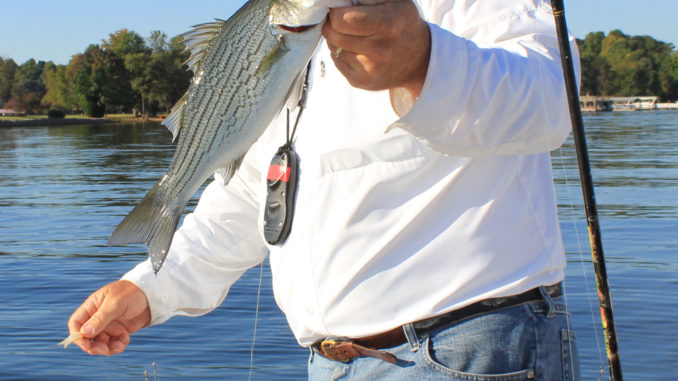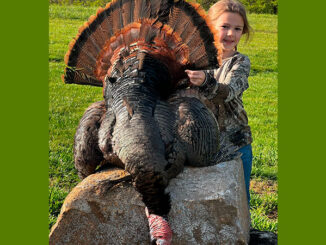
Whether you call it power-jigging, speed-jigging, or speed-reeling, the technique has been proven effective at catching numerous offshore saltwater species, striped bass and now, hybrid bass. Guide Craig Price, who adapted the idea from striped bass fisherman on large southeastern reservoirs, knew it would be a hit with hybrids.
The motive behind power-jigging is to achieve a reaction strike, to trigger a fish to strike even if it isn’t feeding. It’s an ace in the hole for tightly schooled, suspended fish that are a bit moody.
The principle is simple but must be fine-tuned to be effective. Price drops his offering vertically through a school, all the way to the bottom. Then, he retrieves it at a good steady pace. With any luck, the bait is hammered and returns with a thrashing hybrid. If not, the speed of the retrieve may be increased or the bait can be ripped upwards with a swing of the rod, reeled down and ripped again until it’s at the surface.
Productive baits range from spoons to lipless crankbaits, to bucktails and tailspinners.
Price adds another twist, power-jigging with a small Alabama rig or umbrella rig designed for smaller species like white bass. With up to 10 arms and baits, this rig has more opportunities to get in something’s face and provoke a bad decision.
The best part of a reaction strike is that it comes with a vengeance. You are basically startling the fish in to making a move, be it to protect itself, surrender to a feeding instinct or simply react without thinking. The result is a bone-jarring thump.





Be the first to comment